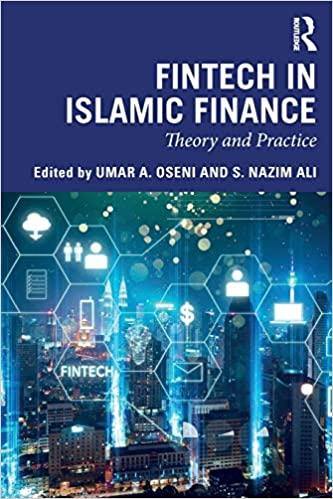Answered step by step
Verified Expert Solution
Question
1 Approved Answer
Stephenson Real Estate Company was founded 2 5 years ago by the current CEO, Robert Stephenson. The company purchases real estate, including land and buildings,
Stephenson Real Estate Company was founded years ago by the current CEO, Robert Stephenson.
The company purchases real estate, including land and buildings, and rents the properties to tenants. The company has shown a profit every year for the past years, and the shareholders are satisfied with the companys management. Prior to founding Stephenson Real Estate, Robert was the founder and CEO of a failed alpaca farming operation. The resulting bankruptcy made him extremely averse to debt financing. As a result, the company is entirely equity financed, with million shares of common stock outstanding. The stock currently trades at $ per share.
Stephenson is evaluating a plan to purchase a huge tract of land in the southeastern United States for $ million. The land will subsequently be leased to tenant farmers. This purchase is expected to increase Stephensons annual pretax earnings EBIT by $ million in perpetuity. Jennifer Weyand, the companys new CFO, has been put in charge of the project. Jennifer has determined that the companys current cost of capital is She feels that the company would be more valuable if it included debt in its capital structure, so she is evaluating whether the company should issue debt to entirely finance the project. Based on some conversations with investment banks, she thinks that the company can issue bonds at par face value with a percent coupon rate. From her analysis, she also believes that a capital structure in the range of percent equity percent debt would be optimal. If the company goes beyond percent debt, its bonds would carry a lower rating and a much higher coupon because of the possibility of financial distress and the associated costs would rise sharply. Stephenson has a percent corporate tax rate.
What aftertax cash flow must Stephenson be currently producing per year, assuming that its current cash flows remain constant each year?
Construct Stephensons market value balance sheet before it announces the purchase.
Market value balance sheet
Debt
Existing Assets Equity
Total assets Total Debt
Equity
Suppose Stephenson decided to issue equity to finance the purchase.
a What is the net present value of the land acquisition project?
b Construct Stephensons market value balance sheet after it announces that the firm will finance the purchase using equity. Assume that the value of the firm will immediately change to reflect the NPV of the new project.
Market value balance sheet
Old assets Debt
NPV of project Equity
Total assets Total Debt
Equity
c What would be the new price per share of the firms stock? How many shares will Stephenson need to issue to finance the purchase?
d Construct Stephensons market value balance sheet after the equity issue, but before the purchase has been made. How many shares of common stock does Stephenson have outstanding? What is the price per share of the firms stock?
Market Value Balance Sheet
Cash
Old assets Debt
NPV of project Equity
Total assets Total Debt
Equity
e What is Stephensons weighted average cost of capital after the acquisition? What aftertax cash flow will be produced annually after the acquisition? What is the present value of this stream of aftertax cash flow? What is the stock price after the acquisition? Does this agree with your previous calculations?
Suppose Stephenson decides to issue debt to finance the purchase.
a What will be the market value of the Stephenson company be if the purchase is financed with debt?
b Construct Stephensons market value balance sheet after both the debt issue and the land purchase. What is the price per share of the firms stock?
Market Value Balance Sheet
Value unlevered Debt
Tax shield Equity
Total assets Total Debt
Equity
c What is Stephensons cost of equity if it goes forward with the debt issue? Do not round your answer.
d What is Stephensons weighted average cost of capital if it goes forward with the debt issue? Do not round your answer.
e What total aftertax cash flow is being generated by Stephenson after the acquisition?
f What is the present value of this aftertax cash flow? What is the market value of equity? What is the stock price? Does this agree with your work from parts a and b
Which method of financing maximizes the pershare price of Stephensons equity?
Does the resultant capital structure with the land acquisition financed by debt satisfy Jennifers concerns about the negative effects of moving beyond the optimal capital structure?
Step by Step Solution
There are 3 Steps involved in it
Step: 1

Get Instant Access to Expert-Tailored Solutions
See step-by-step solutions with expert insights and AI powered tools for academic success
Step: 2

Step: 3

Ace Your Homework with AI
Get the answers you need in no time with our AI-driven, step-by-step assistance
Get Started


